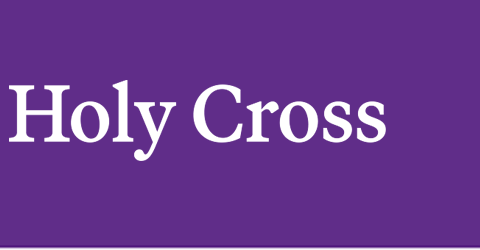Files
Download Full Text (1.7 MB)
Description
John B. Little is the translator.
Book V of the Mathematical Collection is addressed to a certain Megethion, about whom we know nothing else. From the context he may have been a student or patron of Pappus in Alexandria. In a heading at the start, Pappus says that the general theme will be comparisons between different geometric figures. The overall structure brings interesting relations and connections to the fore. The book opens with a very well-known and charming discussion of how the importance of such comparisons can be seen by considering the structures built by non-human creatures such as bees. This might seem surprising since the bees do not seem to have the power to reason about geometry in the ways that humans do. But Pappus starts by identifying tilings of the plane as plans for the cross-section of a structure like a honeycomb. He points out that only equilateral triangles, squares, and regular hexagons can form regular tilings of a plane and those are the only conceivable possibilities for the tidy and systematic bees. Among these options, the bees have settled on the hexagon for their honeycombs because a hexagon encloses a greater area than a triangle or a square of the same perimeter. Since the perimeter of the cell gives a measure of the quantity of material needed to construct the cell, while the area is related to the storage capacity, the hexagonal shape is the most economical one for storing honey. The bees possess a certain kind of ``geometric foresight'' aimed at providing for the material needs of their lives. On the other hand, humans can reason and are convinced by logical demonstrations and this leads to a greater form of wisdom. Hence Pappus proceeds to give proofs that the rectilinear plane figure of maximal area with a given number of sides and a given perimeter must be equilateral and equiangular. In addition, among regular polygons with the same perimeter, polygons with more sides always contain more area. Moreover, the circle with the same perimeter or circumference is larger in area than all the regular polygons. These theorems were apparently first established by Zenodorus (ca. 200 - 140 BCE (?)) although Pappus does not mention him by name. After considering a somewhat similar result for regions bounded by arcs of circles, Pappus shifts the discussion to the realm of three-dimensional figures and results he explicitly attributes to Archimedes (ca. 287 - 212 BCE). The main theme is comparisons between figures such as polyhedra, cones, and cylinders on the one hand, and the sphere on the other hand. Pappus introduces the five regular (Platonic) solids, then provides a quite detailed discussion of the thirteen ``semi-regular'' or Archimedean solids. No surviving work of Archimedes describes these solid figures, though, so Pappus's account is interesting from the historical point of view. Pappus then shows that the sphere is greater than any regular polyhedron of the same surface area. The final sections of Book V contain an exposition of famous results from Book I of Archimedes' On the sphere and cylinder, and a proof that the regular polyhedra have a property parallel to what was seen earlier for plane polygons. Namely, if the surface areas are equal, the polyhedron with more faces encloses a greater volume.
Publication Date
11-2024
Keywords
Mathematics, Greek--Early works to 1800; Mathematics--Early works to 1800; Mathematicae collectiones; Plane geometry; Solid geometry
Disciplines
Classics | Geometry and Topology | Mathematics
Creative Commons License

This work is licensed under a Creative Commons Attribution-NonCommercial-Share Alike 4.0 International License.
Repository Citation
Pappus of Alexandria and Little, John B., "Book V of the Mathematical Collection of Pappus of Alexandria, translated by John B. Little" (2024). Holy Cross Bookshelf. 65.
https://crossworks.holycross.edu/hc_books/65


